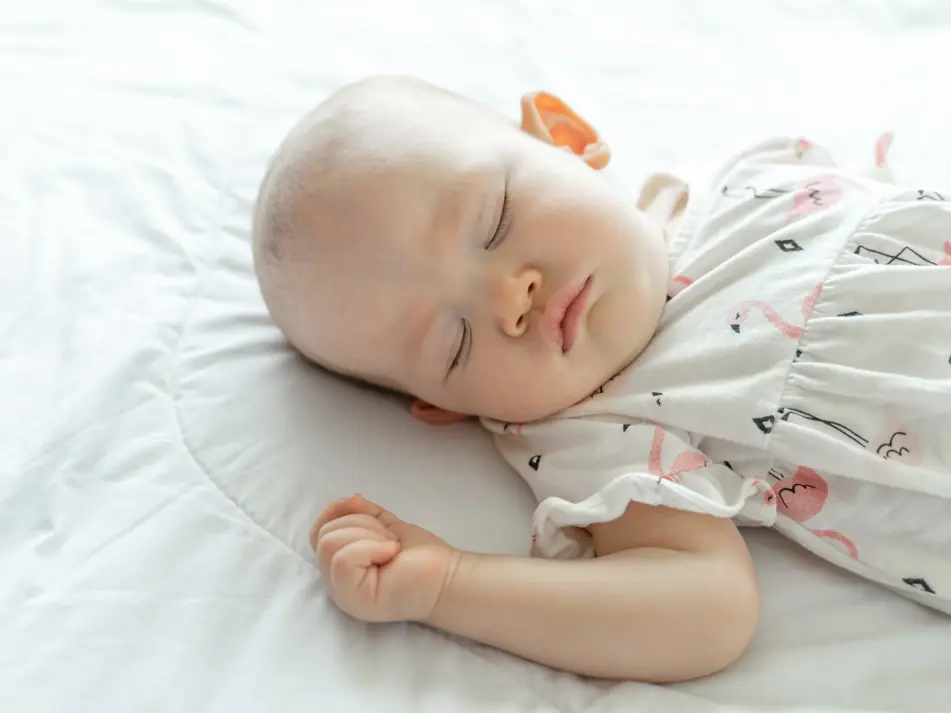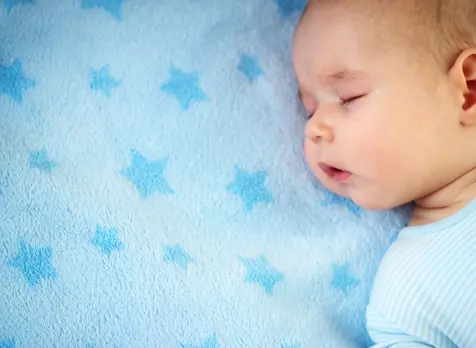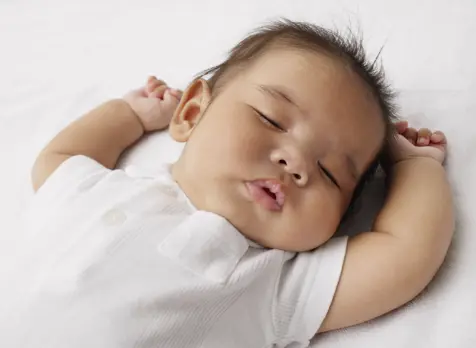Baby Sleep Cycles

Your baby is strongly influenced by the environment, daily activities and routines. They're also influenced by baby sleep cycles which differ based on their age and developmental stage.
When you understand baby sleep cycles, you can put together a predicable routine that will help your baby establish good sleep patterns.
What are baby sleep cycles?
There are two types of sleep cycles that your baby develops. The first is circadian rhythms which are the 24-hour day-night rhythms. When a baby is born, they don't know night from day and will need to develop that over time.
Exposing them to natural bright light in the morning and afternoon, setting up a predictable routine to your day and keeping lights dimmed overnight will help them learn the difference from day and night. They will generally learn this by the age of 4 weeks.
Apart from the day–night circadian sleep cycle, your baby has another type of sleep cycle to develop. The second sleep cycle occurs during your baby’s periods of sleep.
Your baby’s sleep cycles are divided up into two distinct ‘sleep states’ called ‘active sleep’ (dreaming) and ‘quiet sleep’. When you understand these sleep states, you can help your baby get better sleep.
What are the stages of a sleep cycle?
-
1
Active sleep: You might notice that your baby has quite a lot of active (or dream) sleep. All young babies have more active sleep than older babies and children, because they aren’t awake or socialising much yet. They're not getting much external stimulation for brain growth so they need lots of dreaming sleep during this early period.
Active sleep is when they move their arms and legs, suck and even smile. This might be confusing but it doesn’t mean you should keep them awake, they need all that active sleep. They will socialise when they need to.
-
2
Quiet sleep. As they grow up, their active sleep cycles will reduce and they will have more quiet sleep. During quiet sleep, they won’t move much at all and might be difficult to rouse.
-
3
Transitional state. At the end of active sleep, your baby usually stirs as they move into a transitional state and it seems as if they might be awake. This is when they might cry and call out. Sometimes they will manage to go back to sleep, other times they will need your help.
How long is a baby sleep cycle?
During the first three months of your baby’s life, their newborn sleep cycle is only just starting to develop. Your new baby may sleep for 14–17 hours a day with periods of sleep for as little as 50 minutes to two hours of sleep, at any time of the day and night.
On average, sleep cycles of active and quiet sleep last about 50 minutes, although sometimes can be as short as 30–40 minutes.
Case study: The cat-napper
Here’s a common situation, where it’s really easy to confuse parts of your baby’s sleep cycles, and drowsy and awake states.
Your one-month-old baby has fallen asleep straight after his feed. You notice that he seems still, quiet and deeply asleep, so you put him into his cot and tiptoe away. He stays asleep for 40 minutes, then you hear him stirring. Is he awake now? Is it time to get him up? Is 40 minutes enough sleep? You’re not sure, so you go and have a look.
When you see him, he’s moving about a little and his eyes are opening and closing. You wait and watch because you’re really not sure what he’s doing. Then you see him open and close his eyes, and he pouts and squirms a little. He seems like he’s awake now. You don’t want him to cry, so you go and pick him up before he gets upset. You wonder whether he might be hungry again, or lonely, or have a pain in his tummy. Maybe he doesn’t need any more sleep?
You take him out of his cot and back into the brightly lit living area. The TV is on while you change his nappy and talk to him in an upbeat way to cheer him up. He watches you closely, but his movements seem jerky. He’s fussy and yawns. By the time you’ve finished the nappy change, he’s fully awake but not very sociable. He doesn’t seem hungry but you decide to feed him anyway, just in case. He takes a small feed then, after fussing and crying for half an hour, he falls asleep in your arms. You decide to put him back into his cot to see if he’ll have a longer sleep. He wakes up again after 40 minutes and you go through the whole routine again.
So, what happened?
When he woke up after 40 minutes, he was probably at the end of a sleep cycle and was in a transitional drowsy state. Next time, try to wait a moment longer or resettle him. He may go back to sleep.
When we mix up our baby’s states of consciousness, we risk interrupting his sleep, getting him up to feed or socialise when he isn’t ready. The result can be that the baby becomes physiologically disorganised. When that happens, the baby’s behaviour becomes disorganised as well, and he’ll show you by becoming tired, grumpy and may not feed well.
What are normal sleep patterns?
Here’s what’s considered to be normal sleep patterns for a young baby.
Newborn to six weeks
Newborns generally have six to eight regularly occurring periods of sleep, lasting two to four hours around the clock. Your baby has no day–night pattern yet.
Babies have short and sometimes frequent periods of wakefulness for a feed, short socialisation or resettle.
The day–night pattern emerges by about four weeks, sometimes longer, if your baby is exposed to bright light levels at the wrong time of day.
Six weeks to three months
One period of sustained sleep for four to five hours during the night, when your baby may begin to self-settle. During this long sleep, your baby will have one to three brief awakenings.
Your baby will wake at least one to three times during both day and night sleeps, and need help resettling.
At about six weeks, sleep begins to become more concentrated into the night-time hours and your baby is more awake during the day.
Three months onwards
By three months, your baby reaches a big turning point. At this point, they will spend less time in active sleep and more time in quiet sleep during the daytime. This is because they are spending more time awake and enjoying more social time with you.
Once they start to receive lots of loving attention through games, play and social encounters with you, they won’t need to dream so much.
Consciousness and sleep cycles are closely linked. The stages of light sleep and drowsiness relate to waking up and learning how to self settle. When a baby isn't sure how to do that, it's often where sleep challenges arise.
In the first three months, 95 per cent of babies will cry when waking and need to be resettled back to sleep, and this resettling may be separate from a feed time.
Remember that you cannot control your baby’s sleep. You can’t teach or train him to sleep to a special one-size-fits-all ‘sleep prescription’, which you might have read in a book or found online, especially when he’s less than three months old.
Developing your baby's sleep cycle
In the beginning, there isn't much you can do about changing your baby's sleep patterns. In fact, they may have already been developed when they were asleep in your womb.
If you noticed when your baby was asleep and awake during the last month of pregnancy, you can actually predict what their daily sleep patterns are going to be after birth.
For example, if they're awake and busy between 2 am and 4 am, then they're likely to be wakeful around that time after they're born. It's like your baby is giving you a heads up while you’re pregnant.
Once they're born, their sleep continues to develop in response to their own brain and body. Their sleep is also impacted on by what’s happening in her environment and how you help her to sleep. You’re a team when it comes to helping your baby gradually develop their ability to sleep longer and soothe herself to sleep.
Most babies don't sleep for 10 to 12 hours without waking through the night. Like anything with a baby's development, learning to sleep takes time however with love, attention and some gentle settling techniques, they will gradually learn to sleep better.









































